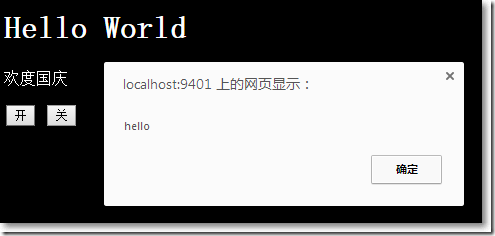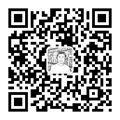JavaScript进阶系列05,事件的执行时机, 使用addEventListener为元素同时注册多个事件,事件参数
本篇体验JavaScript事件的基本面,包括:
■ 事件必须在页面元素加载之后起效
■ 点击事件的一个简单例子
■ 为元素注册多个点击事件
■ 获取事件参数
■ 跨浏览器事件处理
□ 事件必须在页面元素加载之后起效
有这样一段简单的代码:
<head><meta http-equiv="Content-Type" content="text/html; charset=utf-8"/><title></title><style>#box {background: blue;height: 100px;width: 100px;left: 50px;top: 50px;}</style></head><body><div id="box"></div></body>
现在,我们想给id为box的div添加事件,创建一个script.js文件。
(function() {var ele = document.getElementById("box");ele.onclick = function() {this.style.background = "red";};}());
是一个匿名函数,只要被引用,自动运行。
如果把script.js放在head区域。
<head><meta http-equiv="Content-Type" content="text/html; charset=utf-8"/><title></title>......<script src="script.js"></script></head>
点击页面蓝色区域会报错:Cannot set property 'onclick' of null
找不到需要实施onclick事件的元素。如果我们把script.js放在body区域底部,又会怎样呢?
<body><div id="box"></div><script src="script.js"></script></body>
点击页面蓝色区域背景色变成红色。
由此可以看出:事件必须在页面元素加载完毕之后才可以实施。
以上,通过把JavaScript代码放在需要实施事件元素的下方,保证了先加载元素,再执行事件,这很好。而实际上,通过window的onload方法也可以保证所有页面元素加载完毕再执行事件。
修改script.js的代码为:
(function () {window.onload = function() {var ele = document.getElementById("box");ele.onclick = function () {this.style.background = "red";};};}());
把script.js代码放在head部分。点击页面蓝色区域背景色变成红色。
□ 点击事件的一个简单例子
<head><meta http-equiv="Content-Type" content="text/html; charset=utf-8"/><title></title><style>.on {background-color: white;color: black;}.off {background-color: black;color: white;}</style><script src="script.js"></script></head><body class="on"><h1>Hello World</h1><p>欢度国庆</p><button id="open">开</button><button id="close">关</button></body>
script.js的代码为:
(function () {window.onload = function() {var openBtn = document.getElementById("open");var closeBtn = document.getElementById("close");openBtn.onclick = function() {document.body.className = "on";};closeBtn.onclick = function() {document.body.className = "off";};};
一切运行正常。但,如果我们在script.js中给开按钮再注册一个事件。
(function () {window.onload = function() {var openBtn = document.getElementById("open");var closeBtn = document.getElementById("close");openBtn.onclick = function() {document.body.className = "on";};closeBtn.onclick = function() {document.body.className = "off";};openBtn.onclick = function() {alert('hello');};};}());

当点击"开"按钮后,弹出alert。由此可以看出:每次只能为元素注册一个onclick事件。
□ 为元素注册多个点击事件
使用addEventListener方法,可以为元素同时注册多个点击事件。
修改script.js代码如下:
(function () {window.onload = function() {var openBtn = document.getElementById("open");var closeBtn = document.getElementById("close");var open = function() {document.body.className = "on";};var close = function() {document.body.className = "off";};//第三个参数设置成false,表示允许事件冒泡openBtn.addEventListener("click", open, false);openBtn.addEventListener("click", function() { alert('hello'); }, false);closeBtn.addEventListener("click", close, false);};}());
当然,也可以移除注册的事件。
//移除EventListner事件openBtn.removeEventListener("click", open, false);
注意:在IE8下没有addEventListner,应该使用attachEvent。
openBtn.attachEvent("onclick", function(evt)){alert(evt.srcElement);//相当于target属性document.body.className = "on";};
○ attachEvent只有2个参数
○ 事件名称是onclick,而不是click
○ event.srcElement相当于event.target
如果在IE8下注销事件。
openBtn.detachEvent("onclick",函数名称);
□ 获取事件参数
在每次发生事件的时候,所有的事件参数信息都被放在了一个event变量中。修改script.js代码为:
(function () {window.onload = function() {var openBtn = document.getElementById("open");var closeBtn = document.getElementById("close");var open = function (e) {alert(e.type + " " + e.target);document.body.className = "on";};var close = function (e) {alert(e.type + " " + e.target);document.body.className = "off";};//第三个参数设置成false,表示允许事件冒泡openBtn.addEventListener("click", open, false);closeBtn.addEventListener("click", close, false);};}());
可见,函数的事件参数在大多数情况下被省略了,如果想获取事件信息,这个event参数还是很有用的。
□ 跨浏览器事件处理
正因为,在不同的浏览器下事件处理方式不同,比如在chrome下接收addEventListener方法,而在IE8下接收attachEven方法,我们有必要针对跨浏览器提供一个通用的事件处理机制。
创建eventUtiltiy.js文件。
var eventUtility = {addEvent: function(ele, type, fn) {if (typeof addEventListener !== "undefined") {ele.addEventListener(type, fn, false);} else if (typeof attachEvent !== "undefined") { //比如在IE8下ele.attachEvent("on" + type, fn);} else {//获取属性通过obj.属性名称,等同于obj[属性名称]//执行事件通过obj.事件名称,等同于obj[事件名称]ele["on" + type] = fn;}},removeEvent: function(ele, type, fn) {if (typeof removeEventListener !== "undefined") {ele.removeEventListener(type, fn, false);} else if (typeof detachEvent !== "undefined") {ele.detachEvent("on" + type, fn);} else {ele["on" + type] = null;}},getTarget: function(event) {if (typeof event.target !== "undefined") {return event.target;} else {return event.srcElement;}},preventDefault: function(event) {if (typeof event.preventDefault !== "undefined") {event.preventDefault();} else {event.returnValue = false;}},getCharCode: function(event) {if (typeof event.charCode === "number") {return event.charCode;} else {return event.keyCode;}}};
页面部分。
<head><meta http-equiv="Content-Type" content="text/html; charset=utf-8"/><title></title><style>.on {background-color: white;color: black;}.off {background-color: black;color: white;}</style></head><body class="on"><h1>Hello World</h1><p>欢度国庆</p><button id="open">开</button><button id="close">关</button><script src="eventUtility.js"></script><script src="script.js"></script></body>
script.js部分。
(function () {var openBtn = document.getElementById("open");var closeBtn = document.getElementById("close");var open = function () {//alert(e.type + " " + e.target);document.body.className = "on";};var close = function () {//alert(e.type + " " + e.target);document.body.className = "off";};eventUtility.addEvent(openBtn, "click", open);eventUtility.addEvent(closeBtn, "click", close);}());
“JavaScript进阶系列”包括:

